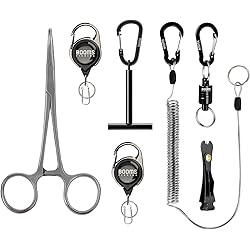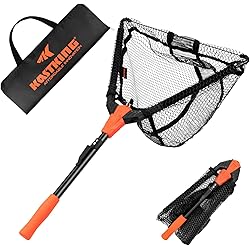Beyond the Surface: Using state-of-the-art deep fishfinder technology to maximize your catch, Welcome to a world where innovation and fishing collide, where conventional methods are just one part of the quest for the ideal catch.
Fishing enthusiasts are leveraging the power of state-of-the-art deep fishfinder technology to improve their fishing experience in our rapidly changing technological world.
Go “beyond the surface” with us as we explore the world of cutting-edge fishfinding techniques that promise to optimize your catch like never before.
In this blog series, we’ll solve the riddles of underwater landscapes by learning how contemporary fishfinders employ cutting-edge sonar technology to reveal the hidden world below the water’s surface.
From analyzing the subtleties of fish behavior to recommending excellent fishing places, these tools go beyond conventional angling expertise, delivering a real-time, data-driven approach to the age-old art of fishing.
“Beyond the Surface” offers an opportunity for all anglers, experienced or novice, to explore the revolutionary potential of deep fishfinder technology.
Prepare to take your fishing to a whole new level as we explore the limits of invention, revealing the mysteries hidden beneath the surface and raising the bar for your fishing exploits.

Evolution of Fishfinder Technology
The development of fishfinder technology over the last several decades has revolutionized both professional and recreational fishing.
The advancement has been astounding, going from simple sonar systems to complex GPS-enabled gadgets.
In order to locate fish, early fishfinders used simple sonar principles, which involved sending sound waves into the water and analyzing the reflections.
As a result of technological advancements, LCD screens improved the accuracy and clarity of underwater imagery.
The introduction of GPS further revolutionized fishing by enabling fishermen to navigate with previously unheard-of accuracy and pinpoint precise positions.
In recent years, artificial intelligence has emerged, bringing with it machine learning algorithms capable of deciphering fish behavior from underwater data analysis.
Furthermore, wireless connectivity has improved user comfort by enabling smooth communication between fishfinders and other gadgets, such as smartphones and tablets.
The advancement of fishfinder technology has not only increased fishing’s efficiency, but also made it a linked, data-driven activity.
With so much information readily available to them, anglers may now make well-informed decisions that greatly increase their odds of catching a fish.
The next year in this exciting subject is sure to bring even more interesting advances.

Understanding Deep Fishfinder Technology
With deep fishfinder technology, anglers can now see underwater habitats like never before, which is a huge advancement in the sport.
With the use of sophisticated sonar systems and artificial intelligence algorithms, this state-of-the-art technology can provide precise photographs of the underwater environment, providing real-time information on fish locations and behaviors.
Deep fishfinders provide high-resolution pictures by using numerous sonar beams and advanced signal processing, in contrast to typical fishfinders that only provide basic depth estimates.
These photos have the ability to recognize various fish species, gauge their size, and even analyze their migratory habits.
Thanks to this level of detail, anglers can make well-informed judgments about where to cast their lines for the best chance of success.
Furthermore, a lot of deep-sea fishfinders have GPS connectivity built in, which makes it simple for users to record and return to successful fishing locations.
As technology advances, these gadgets become easier to operate, allowing fishing enthusiasts of all skill levels to use them.
Essentially, mastering deep fishfinder technology transforms the way fishermen approach and enjoy the age-old sport of fishing by providing them with a full picture under the surface of the water.
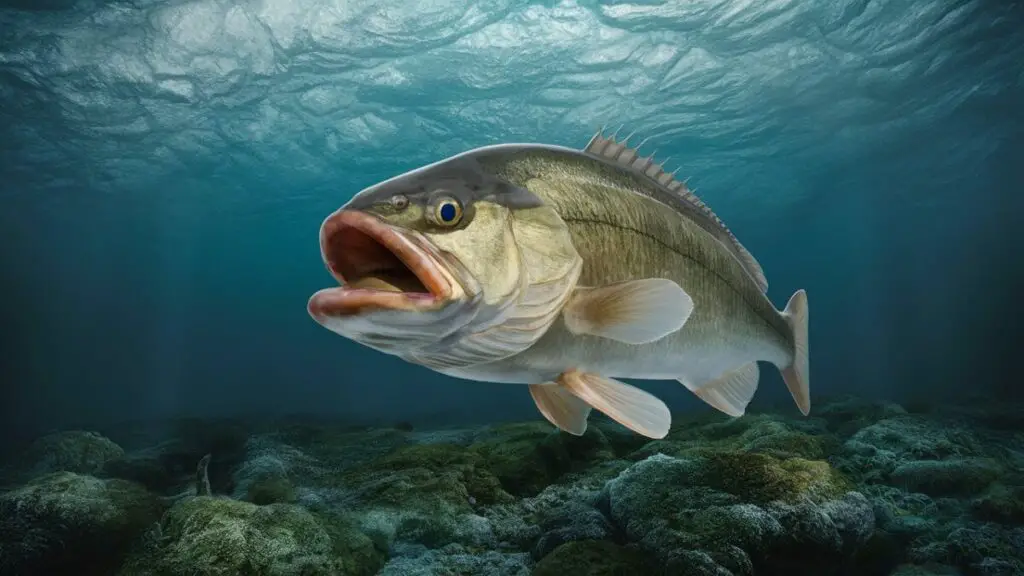
Benefits of Deep Fishfinder Technology
With so many advantages, deep fishfinder technology transforms anglers’ fishing experience.
With the use of sophisticated sonar systems, this state-of-the-art technology offers unmatched insights into undersea ecosystems, allowing fishermen to spot fish with previously unheard-of precision.
The capacity to scan deeper water allows fishermen to explore previously uncharted territory and find elusive species, which is one of their main advantages.
Deep fishfinders also improve efficiency by precisely differentiating between fish and surrounding objects, reducing false positives, and maximizing the fishing strategy.
With this technology’s high-resolution imagery and real-time data, fishermen can display and choose bait with confidence.
This not only improves the likelihood of a successful catch, but also supports sustainable fishing methods by reducing unwanted bycatch.
Moreover, deep-sea fishfinders are affordable for both inexperienced and seasoned fishermen due to their user-friendly interfaces and wireless connections.
The technology’s ability to create detailed maps of the underwater topography facilitates navigation.
All things considered, deep fishfinder technology has advantages that go beyond simply finding fish; it makes fishing a more fulfilling and effective activity and promotes a better knowledge and enjoyment of aquatic environments.

Choosing the Right Deep Fishfinder for You
To improve your fishing experience, get the best deep fishfinder available.
There are several solutions available, so carefully examine which one best meets your needs.
First, make sure the fishfinder’s depth capabilities correspond to the depths you usually fish.
Higher frequencies work best in shallow waters, while lower frequencies work best in deeper seas.
Understanding the information below requires a readable and clear screen, so it’s important to consider the size and resolution of the display.
Consider the unit’s power as well; a larger wattage yields better results, particularly in murky or deep waters.
GPS functionality may be useful for fishing spot identification and navigation.
Consider the transducer type—single or multiple beam—as it affects the measurement’s accuracy and coverage area.
Your fishing setup enhances the ease and usefulness of wireless networking and device compatibility.
Finally, consider the ease of installation and mobility to ensure a seamless integration into your fishing routine.
By carefully considering these elements when selecting the best deep-fisher, you can maximize your chances of having a productive and pleasurable fishing trip.
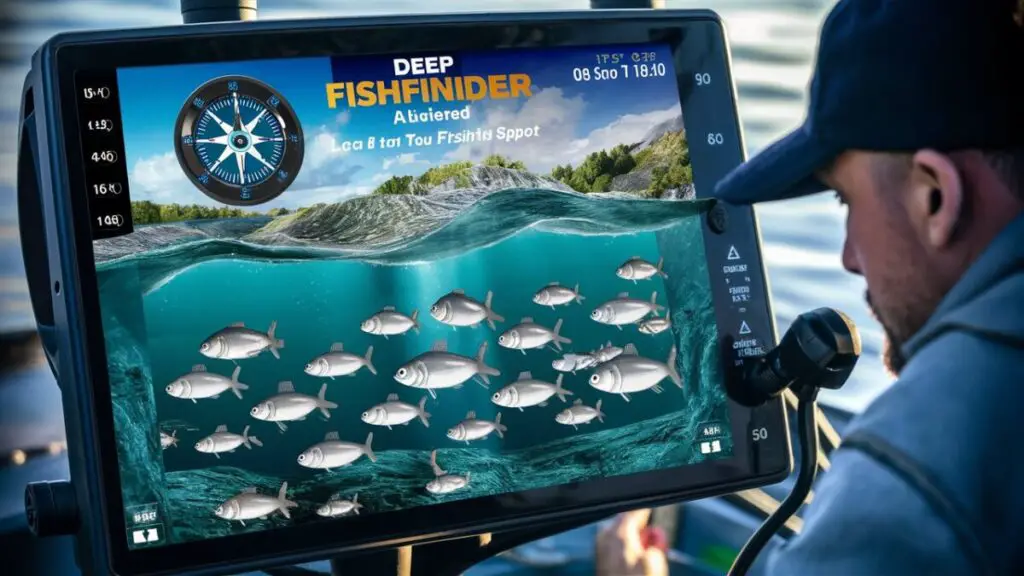
Installation and Calibration
Installing and calibrating a deep fishfinder is an essential step for fishermen looking to improve their fishing.
This cutting-edge technology provides precise information on fish locations and underwater topography using state-of-the-art sonar equipment.
Careful installation and calibration are essential to guaranteeing peak performance.
Start by carefully attaching the Deep Fishfinder to your boat, making sure the seal is tight and watertight.
For best signal transmission, install the transducer according to the manufacturer’s instructions, which are usually under the hull.
After installation, start the calibration procedure, which adjusts the device to certain water parameters.
This entails modifying the beam angles, sensitivity, and frequency to correspond with the fishing environment.
Proper calibration ensures accurate readings, reducing false alarms and increasing the likelihood of finding fish.
Spend some time learning the subtleties of your Deep Fishfinder’s settings and tailoring them to your preferred fishing method and the species you’re pursuing.
By adding Deep Fishfinder Installation and Calibration to your fishing regimen, you may advantage from a plethora of chances and get a technical advantage that will make your fishing more effective and informed. Have fun angling!

Tips for Optimizing Deep Fishfinder Performance
By following these tips for improving deep fishfinder performance, you can greatly improve your fishing experience.
First and foremost, ensure the correct positioning and installation of your transducer.
Proper installation ensures accurate readings, especially when exploring deeper waters.
Adapt the frequency settings to the depth at which you are fishing; in shallower waters, higher frequencies provide greater clarity, while lower frequencies penetrate deeper.
Update the software on your fishfinder often to take advantage of the newest features and enhancements.
Learn how to use the settings, including adjusting the sensitivity and gain to reduce noise and improve target separation.
Deep Fishfinder Technology to Maximize Your Catch
In deep waters, understanding how to interpret the sonar returns becomes crucial. Recognizing the difference between fish arches, thermoclines, and bottom structures can make a significant difference in your success.
Consider investing in a high-quality fishfinder with advanced features such as CHIRP technology, which provides better target separation and clarity at greater depths.
Ensure your power source is sufficient for prolonged use in deep waters.
Additionally, practice patience and learn to interpret the subtle nuances in the display to distinguish potential catches from false readings.
By following these tips, you can optimize your deep fishfinder performance and increase your chances of a successful and rewarding fishing expedition.
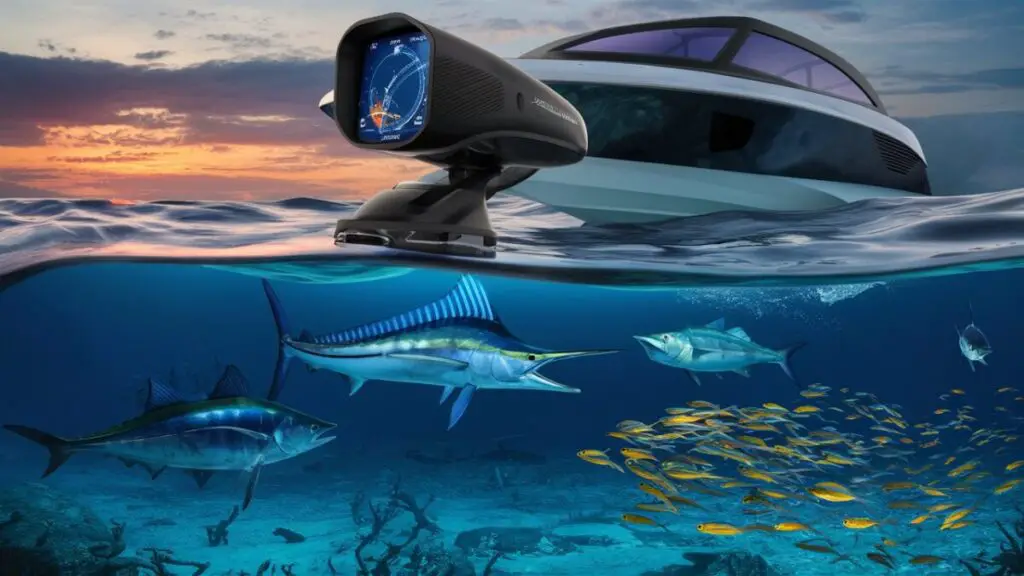
Real-Life Success Stories
“Deep Fishfinder Real-Life Success Stories” has completely changed the way anglers think about fishing, giving fishermen all around the world unmatched success.
Consider Jake, a passionate fisherman who had trouble finding elusive fish in his preferred lake.
He underwent a radical change with the assistance of Deep Fishfinder.
He was able to obtain precise and up-to-date information on fish behavior, position, and depth thanks to the sophisticated sonar equipment, which also helped him capture a lot more fish.
In a similar vein, Sarah, a beginner angler, used Deep Fishfinder to gain confidence and success.
She was able to maneuver the waters like an experienced expert because of the user-friendly features and straightforward design.
These kinds of success tales have made Deep Fishfinder a symbol of hope for fishermen of all stripes.
In yet another motivational story, Mike, a professional fisherman, says Deep Fishfinder improved his competition results.
Because of the device’s accuracy, he was able to strategically target trophy fish, which gave him an advantage over his competitors and helped him win.
These true success stories highlight Deep Fishfinder’s revolutionary effects, making it a vital tool for fishermen looking to improve their fishing and achieve amazing results on the water.
Cheers to another year of realizing your fishing goals!

Challenges and Solutions
For underwater research, deep fishfinder technology offers both new obstacles and creative answers.
Deep seas pose a significant challenge as typical fishfinders may struggle to reliably identify fish and underwater objects.
Cutting-edge sonar technology must solve a unique set of challenges presented by the enormous and frequently unexplored depths.
Engineers have created wide-beam and high-frequency sonar devices to overcome these difficulties, improving the accuracy and range of deep fishfinders.
These developments make it possible to identify fish and structures in deeper seas, giving both commercial and recreational fishermen important new information.
Furthermore, the use of artificial intelligence has proven to be crucial in the analysis of intricate data gathered from the depths, assisting users in more accurately interpreting underwater environments.
Furthermore, improved signal processing methods have been developed to solve the problem of signal distortion caused by deep-water conditions.
These algorithms enhance the received data, minimize interference, and ensure accurate and reliable fish identification, even in challenging environments.
As technology advances, deep fishfinder solutions have the potential to transform how we explore and use the riches buried under the surface, opening up new avenues for comprehending and navigating the enigmatic depths of our seas.

Future Trends in Fishfinder Technology
It’s wonderful to consider the tremendous advancements in fishfinder technology over the last year as we commemorate the Deep Fishfinder’s first anniversary.
Future developments in fishfinder technology might lead to even more breakthroughs and a complete transformation of how fishermen fish the deeps.
The use of artificial intelligence (AI) in fishfinder devices is one notable trend.
AI algorithms analyze large volumes of underwater data, providing fishermen with real-time insights about fish behavior and the best places to fish.
This clever technology adjusts to changing conditions to provide a dynamic and responsive fishing experience.
The improvement of imaging capabilities is another significant advancement.
As augmented reality overlays and high-resolution 3D photography become more commonplace, fishermen will be able to see underwater landscapes in previously unheard-of detail.
This helps with both fish identification and navigating difficult underwater environments.
Additionally, as connectivity advances, it becomes possible to integrate smart devices and fishing equipment seamlessly.
The ability for anglers to exchange real-time data, collaborate on techniques, and even participate in virtual fishing contests fosters a sense of community in the fishing community.
As we commemorate the one-year anniversary of the Deep Fishfinder, we anticipate significant advancements in fishfinder technology, ensuring that anglers will continue to push the boundaries of submerged exploration and discovery.

Environmental Considerations
The Deep Fishfinder is a cutting-edge instrument in the world of fishing technology, completely changing how anglers detect and chase fish in deeper areas.
But while we commemorate its one-year anniversary and applaud its inventive powers, it is imperative to examine the environmental issues related to this cutting-edge gadget.
To map the underwater terrain and identify fish, the Deep Fishfinder uses sound waves.
Although this technology makes fishing more efficient, there are worries about how it could affect marine life.
According to certain research, using fishfinders excessively may damage aquatic animals’ habitats and interfere with their normal behavior.
Sustainable fishing necessitates balancing the Deep Fishfinder’s advantages with its environmental consequences.
We urge anglers to use this equipment with caution, to avoid sensitive regions, and to follow conservation-focused recommendations.
Further development and research should concentrate on improving fishfinder technology to lessen its ecological impact.
The Deep Fishfinder’s birthday serves as a reminder that we must balance fishing technology advancements with environmental responsibility in order to protect our aquatic ecosystems for future generations.
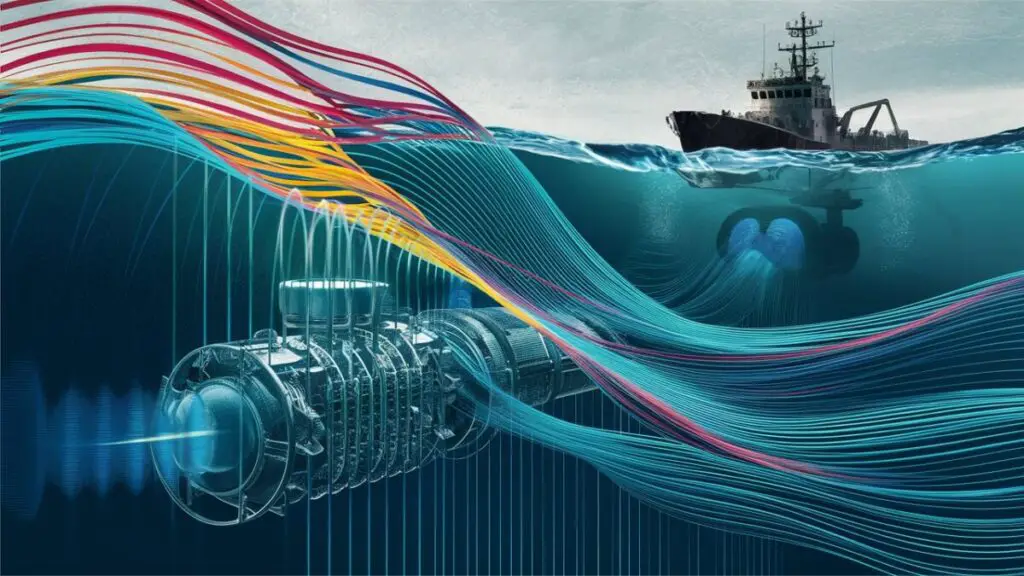
Comparative Analysis with Traditional Fishfinders
Modern fishfinders have emerged in the ever-evolving field of maritime technology, marking a substantial departure from their conventional predecessors. This has prompted a comparative analysis that focuses on the revolutionary qualities of contemporary solutions.
Contemporary fishfinders, in contrast to their historical counterparts, have state-of-the-art features such as sophisticated sonar systems, GPS integration, and artificial intelligence algorithms.
Traditional fishfinders used single-frequency sonar, which had poor depth perception and frequently produced inaccurate readings.
Their contemporary equivalents, in sharp contrast, make use of multi-frequency sonar, which allows for more precise and thorough representations of fish arches and underwater terrain.
Furthermore, the use of GPS technology enables accurate location monitoring, giving fishermen the capacity to effortlessly return to successful locations.
Artificial intelligence has raised the bar for current fishfinders by allowing real-time monitoring of fish behavior and the underwater environment.
Anglers are able to make better decisions as a result, increasing their chances of catching fish.
Although conventional fishfinders were essential in their own right, the comparative comparison highlights how modern technology may revolutionize the maritime exploration and fishing industries by bringing in a new era of efficiency and precision.

Deep Fishfinder Accessories
You can precisely explore the depths with Deep Fishfinder Accessories, the best gear available for fishermen looking for unmatched underwater insights.
These cutting-edge add-ons enhance your fishfinder’s functionality and provide a comprehensive view of the underwater environment beneath your vessel.
With Deep Fishfinder Accessories’ cutting-edge sonar technology, you can clearly spot fish schools, underwater objects, and even elusive trophy captures thanks to its high-resolution imaging capabilities.
These accessories enhance your fishing experience, regardless of your level of skill, by offering real-time information on water temperature, depth, and bottom composition.
Use the most recent advancements in fishfinding technology to confidently navigate across bodies of water.
Deep Fishfinder Accessories ensures that you stay ahead of your aquatic targets, from transducer mounts for optimal sonar alignment to specialized cables for flawless communication.
On your one-year anniversary in the world of fishing technology, enjoy your adventure with these essential tools and dive into a new era of success and precision in your angling.

User Reviews and Ratings
Deep Fishfinder has received many positive customer reviews and high ratings, indicating its widespread success.
With this state-of-the-art fishfinding technology, anglers and fishing lovers throughout the world have joyfully shared their experiences.
Customers frequently commend Deep Fishfinder for its unmatched precision in fish location, which allows them to maximize their fishing excursions with remarkable effectiveness.
The user-friendly interface has also received praise, making it suitable for both novices and experienced fishermen.
Many consumers emphasize how the gadget gives them a tactical edge on the water by providing real-time data on fish activity, depth, and water conditions.
Users have expressed pleasure with Deep Fishfinder’s sturdy build, which ensures it can withstand the rigors of different fishing settings. This indicates that the device is durable.
Its smooth mobile device integration has also received praise for enabling customers to easily access data while on the road.
In conclusion, user reviews and ratings for Deep Fishfinder highlight the company’s status as a game-changer in the fishing business, fulfilling its promise to improve fishing experiences through cutting-edge technology and intuitive design.
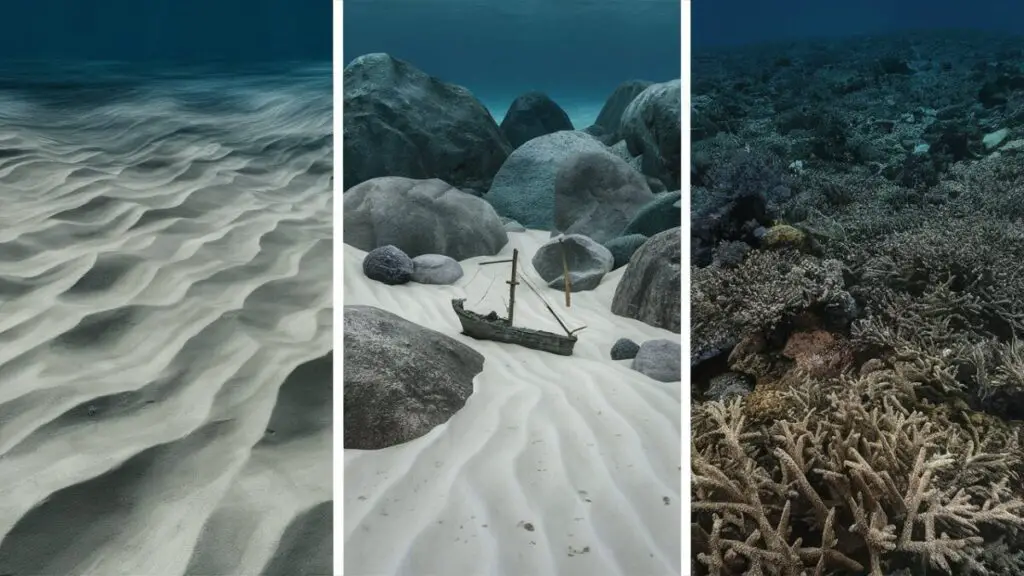
Conclusion
In the ever-evolving world of fishing technology, deep fishfinders stand out as a game-changer for anglers seeking to elevate their fishing experience.
By delving beyond the surface, you unlock a world of possibilities, maximize your catch, and turn every fishing trip into an adventure.
FAQs:
Q: Can deep fishfinders be used in freshwater lakes?
A: Absolutely! Deep fishfinders are versatile and can be used in both saltwater and freshwater environments.
Q: Are deep fishfinders difficult to install?
A: Not at all. Follow the manufacturer’s instructions, and you’ll have your deep fishfinder up and running in no time.
Q: Do I need special training to use a deep fishfinder?
A: While not mandatory, familiarizing yourself with the user manual ensures optimal use and benefits.
Q: Can deep fishfinders help locate specific fish species?
A: Yes, deep fishfinders with advanced imaging capabilities can distinguish between different fish species.
Q: Are deep fishfinders suitable for beginners?
A: Absolutely! Many deep fishfinder models cater to beginners with user-friendly interfaces and straightforward functionalities.
Hooked on Tech: Exploring the latest Fishing Gadgets that Anglers swear by.
In the realm of angling, where tradition and technology often converge, a new wave of fishing gadgets has emerged, transforming the way anglers approach their craft.
From advanced fish finders to smart bait systems, these innovations have not only revolutionized the fishing experience but have also garnered a loyal following among anglers worldwide.
HAUSHOF Aluminum Fishing Pliers and Fish Lip Gripper, Stainless Steel Multi-Function Fishing Pliers Hook Remover with Tungsten Carbide Cutters, Coiled Lanyard and Sheath
$18.99 (as of July 27, 2024 00:36 GMT +00:00 – More infoProduct prices and availability are accurate as of the date/time indicated and are subject to change. Any price and availability information displayed on [relevant Amazon Site(s), as applicable] at the time of purchase will apply to the purchase of this product.)2/3 Claw Fish Gripper, Fishing Pliers Gripper, 2024 New Multifunctional Metal Fish Control Clamp Forceps, for Catch Most Freshwater Fish Fishing Accessories (3 Claw Fish Gripper)
$9.98 (as of July 27, 2024 00:36 GMT +00:00 – More infoProduct prices and availability are accurate as of the date/time indicated and are subject to change. Any price and availability information displayed on [relevant Amazon Site(s), as applicable] at the time of purchase will apply to the purchase of this product.)Booms Fishing FF3 7 PCS Fly Fishing Tools Kit, Fishing Knot Tool and Line Clipper Retractor, Magnetic Net Release with Lanyard, Fly Fishing Tippet Spool Holder, Hook Remover Forceps
$19.99 (as of July 27, 2024 00:36 GMT +00:00 – More infoProduct prices and availability are accurate as of the date/time indicated and are subject to change. Any price and availability information displayed on [relevant Amazon Site(s), as applicable] at the time of purchase will apply to the purchase of this product.)Sheepshead Jigs, Standup Style Jigheads with 4~10PCs, 3X Strengthened Hook Equipped with 1/2 3/4 1oz for Saltwater Fishing
$9.99 (as of July 27, 2024 00:36 GMT +00:00 – More infoProduct prices and availability are accurate as of the date/time indicated and are subject to change. Any price and availability information displayed on [relevant Amazon Site(s), as applicable] at the time of purchase will apply to the purchase of this product.)Pocketable Fishing Tool Kit, Fishing Pliers Set, Foldable Fishing Knife w Sharpener, Fish Lip Gripper, Hook Remover, Sheath, Lanyards, 2 Options Aboda Fishing Gear Unique Fishing Gift for Starters
Now retrieving the price.
(as of July 27, 2024 00:36 GMT +00:00 – More infoProduct prices and availability are accurate as of the date/time indicated and are subject to change. Any price and availability information displayed on [relevant Amazon Site(s), as applicable] at the time of purchase will apply to the purchase of this product.)



